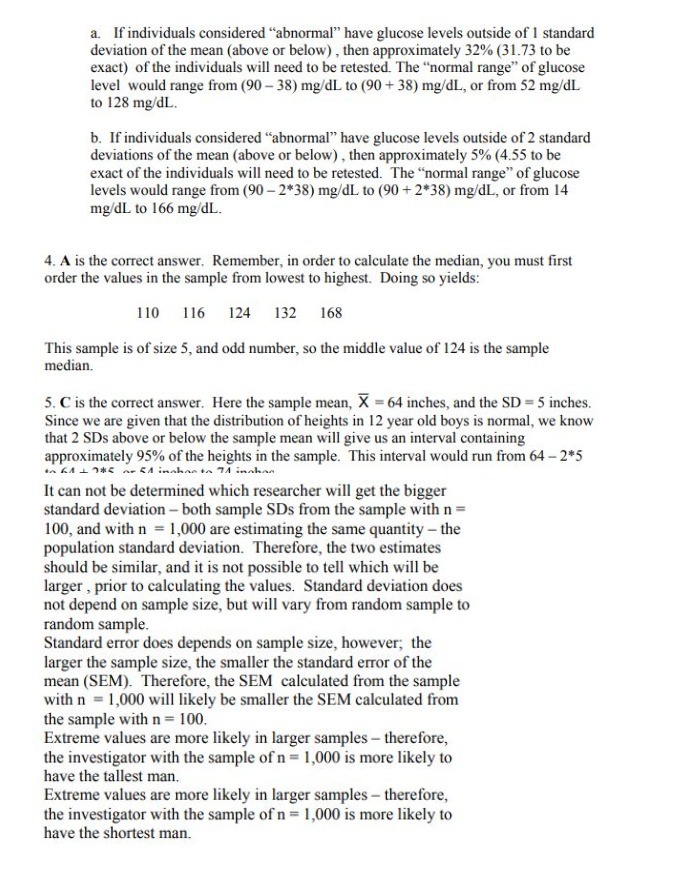a. If individuals considered "abnormal" have glucose levels outside of 1 standard deviation of the mean (above or below) , then approximately 32% (31.73 to be exact) of the individuals will need to be retested. The "normal range" of glucose level would range from (90 - 38) mg/dL to (90 + 38) mg/dL, or from 52 mg/dL to 128 mg/dL. b. If individuals considered "abnormal" have glucose levels outside of 2 standard deviations of the mean (above or below) , then approximately 5% (4.55 to be exact of the individuals will need to be retested. The "normal range" of glucose levels would range from (90 -2*38) mg/dL to (90 + 2*38) mg/dL, or from 14 mg/dL to 166 mg/dL. 4. A is the correct answer. Remember, in order to calculate the median, you must first order the values in the sample from lowest to highest. Doing so yields: 110 116 124 132 168 This sample is of size 5, and odd number, so the middle value of 124 is the sample median. 5. C is the correct answer. Here the sample mean, X = 64 inches, and the SD = 5 inches. Since we are given that the distribution of heights in 12 year old boys is normal, we know that 2 SDs above or below the sample mean will give us an interval containing approximately 95% of the heights in the sample. This interval would run from 64 - 2*5 In LA + 786 ne CA inahas to 71 inshan It can not be determined which researcher will get the bigger standard deviation - both sample SDs from the sample with n = 100, and with n = 1,000 are estimating the same quantity - the population standard deviation. Therefore, the two estimates should be similar, and it is not possible to tell which will be larger , prior to calculating the values. Standard deviation does not depend on sample size, but will vary from random sample to random sample. Standard error does depends on sample size, however; the larger the sample size, the smaller the standard error of the mean (SEM). Therefore, the SEM calculated from the sample with n = 1,000 will likely be smaller the SEM calculated from the sample with n = 100. Extreme values are more likely in larger samples - therefore, the investigator with the sample of n = 1,000 is more likely to have the tallest man. Extreme values are more likely in larger samples - therefore, the investigator with the sample of n = 1,000 is more likely to have the shortest man







